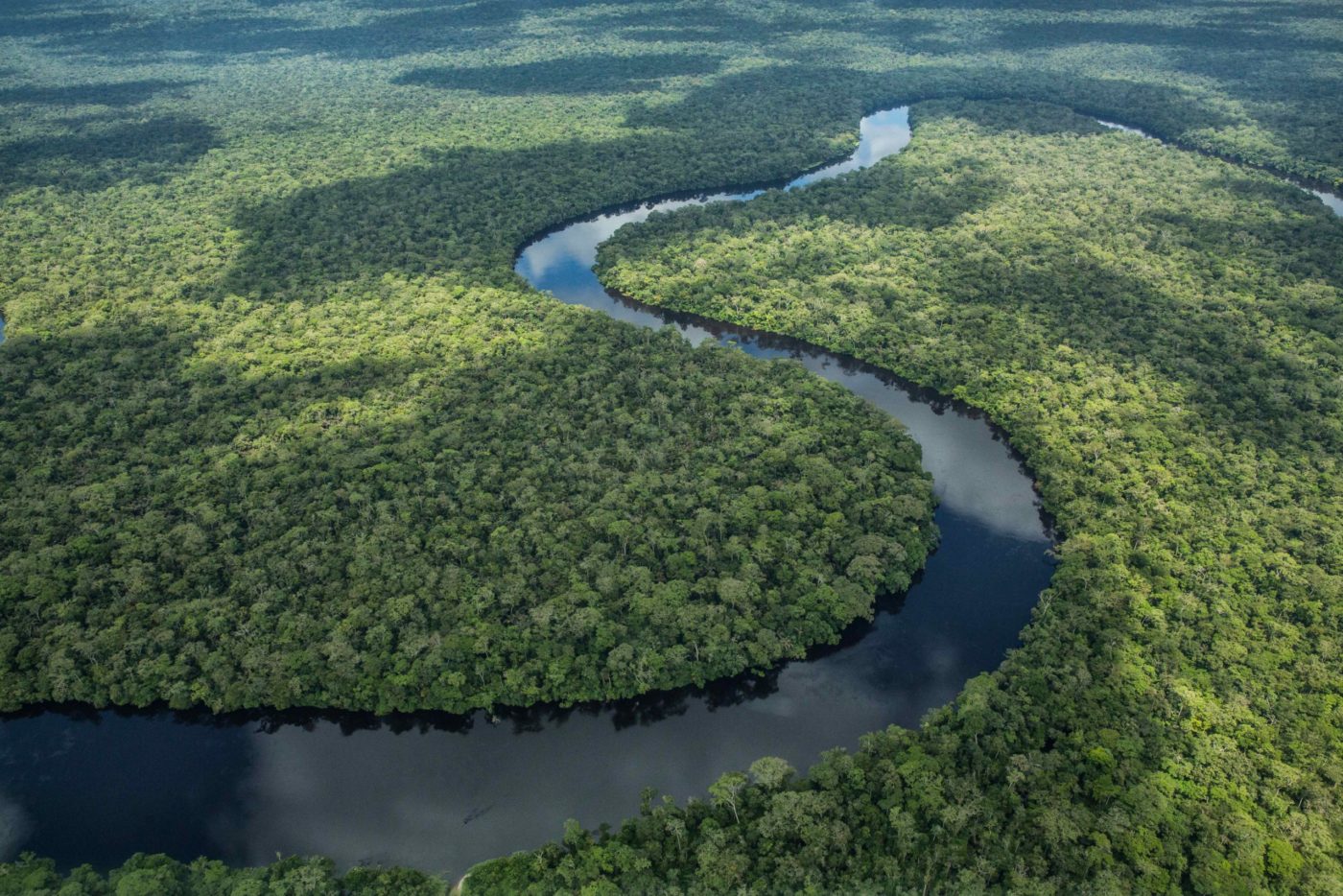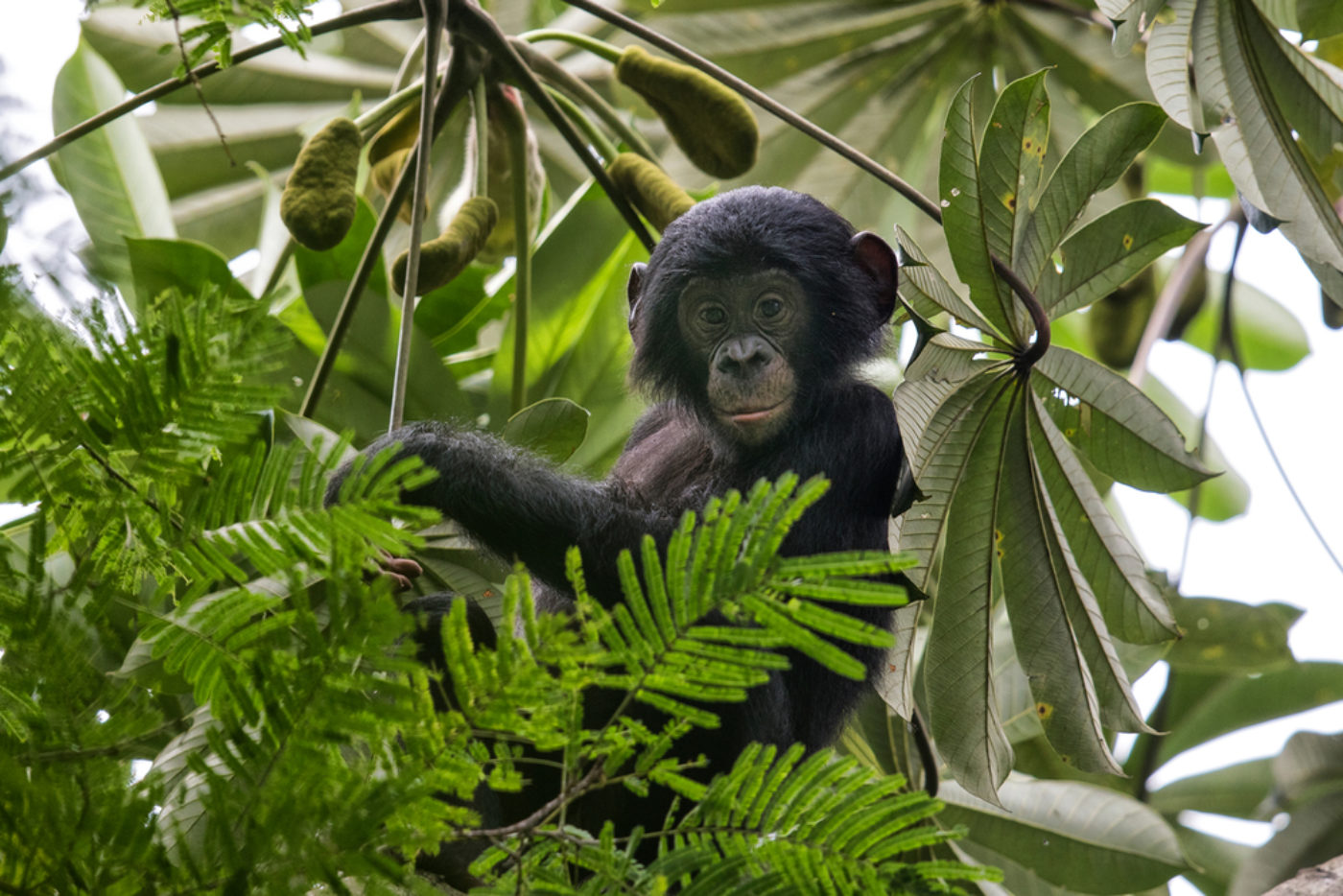The relevance of biomonitoring
Mattia, would you please introduce yourself? Where are you from, what is your background, and how did you come to coordinate the biomonitoring in the Salonga National Park?
I am a from Italy, where I studied Environmental Biology at the University of Turin. My main interest has always been wildlife management and conservation, with particular regards to biomonitoring methods. After a few field experiences in Northern Italy and Europe, I had the chance (thanks to Max Planck Institute of Evolutionary Anthropology – PanAf program) of travelling to Africa for the first time in 2014 to start a study on chimpanzee ecology and behavior in Eastern DRC: the most incredible experience of my life. After that I moved to another site, in the Republic of Congo. Managing these two field sites led me to the coordination of the camera trap biomonitoring in Salonga National Park, with similar tasks, but on a whole different scale.
What do you answer interested people to the question: Why do we need biomonitoring in Salonga?
If we want to preserve the remnant animal population around the world we first need to know where the animals are and how many they are. When we know this, we can assess the threats menacing the different population and put in place strategies for their conservation. Biomonitoring is at the base of any action towards animal conservation.
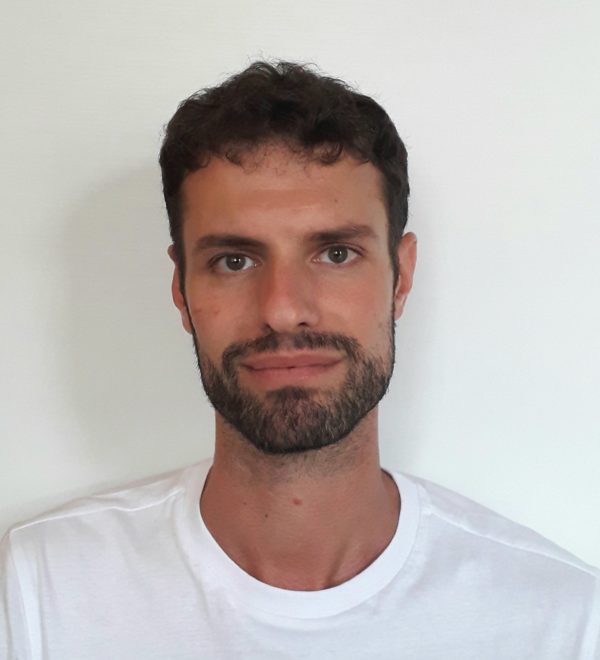
Mattia Bessone studied environmental biology at the University of Turin. He is interested in the management and protection of wildlife, especially in different methods for species monitoring. In 2014, he travelled to Africa for the first time to initiate a study on the ecology and behaviour of chimpanzees in the eastern part of the Democratic Republic of Congo. After a further research stay and the management of a field station in the Republic of Congo, he assumed the coordination of the biomonitoring in Salonga National Park.
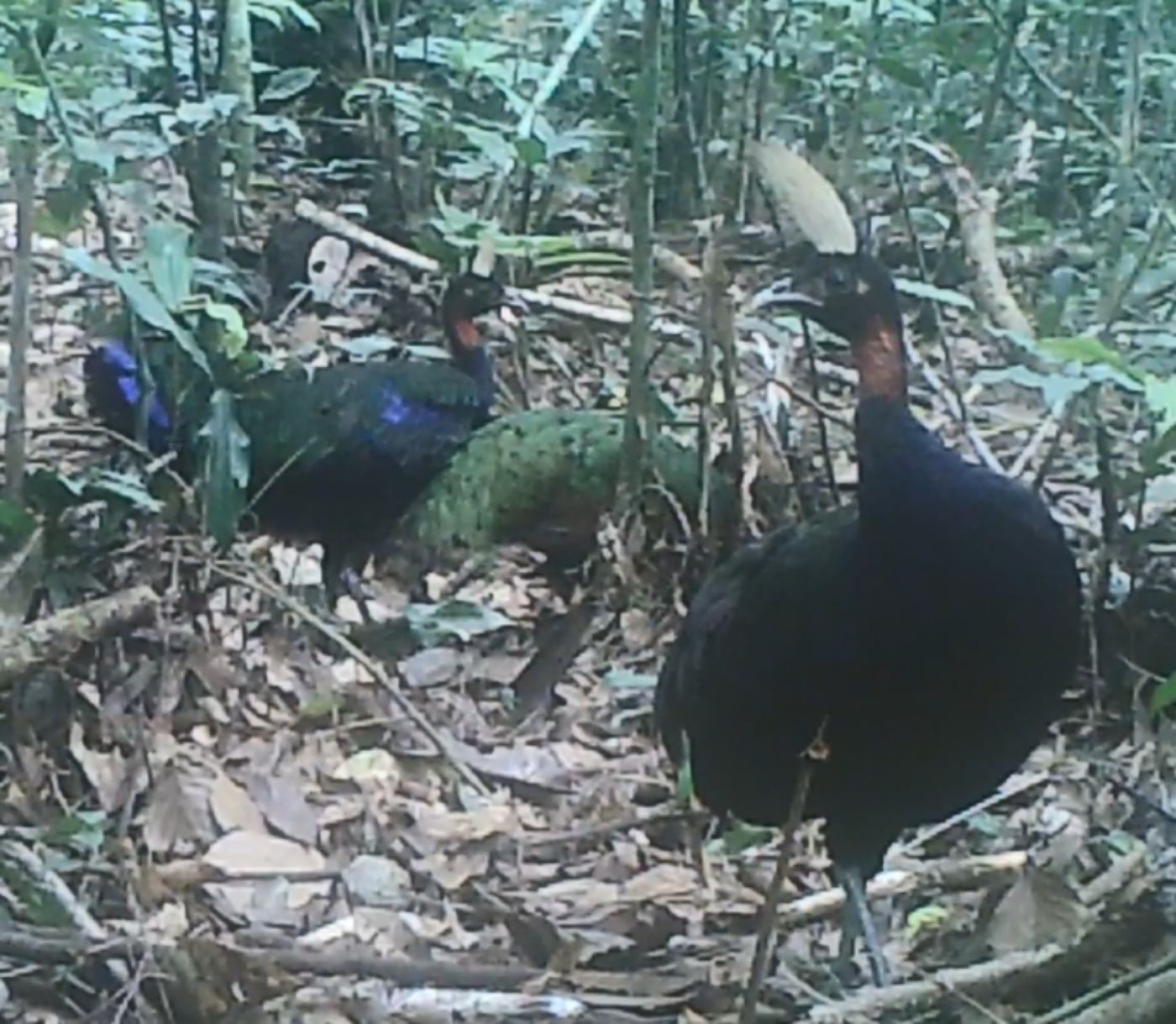
Camera trap footage of rare Congo peafowls.
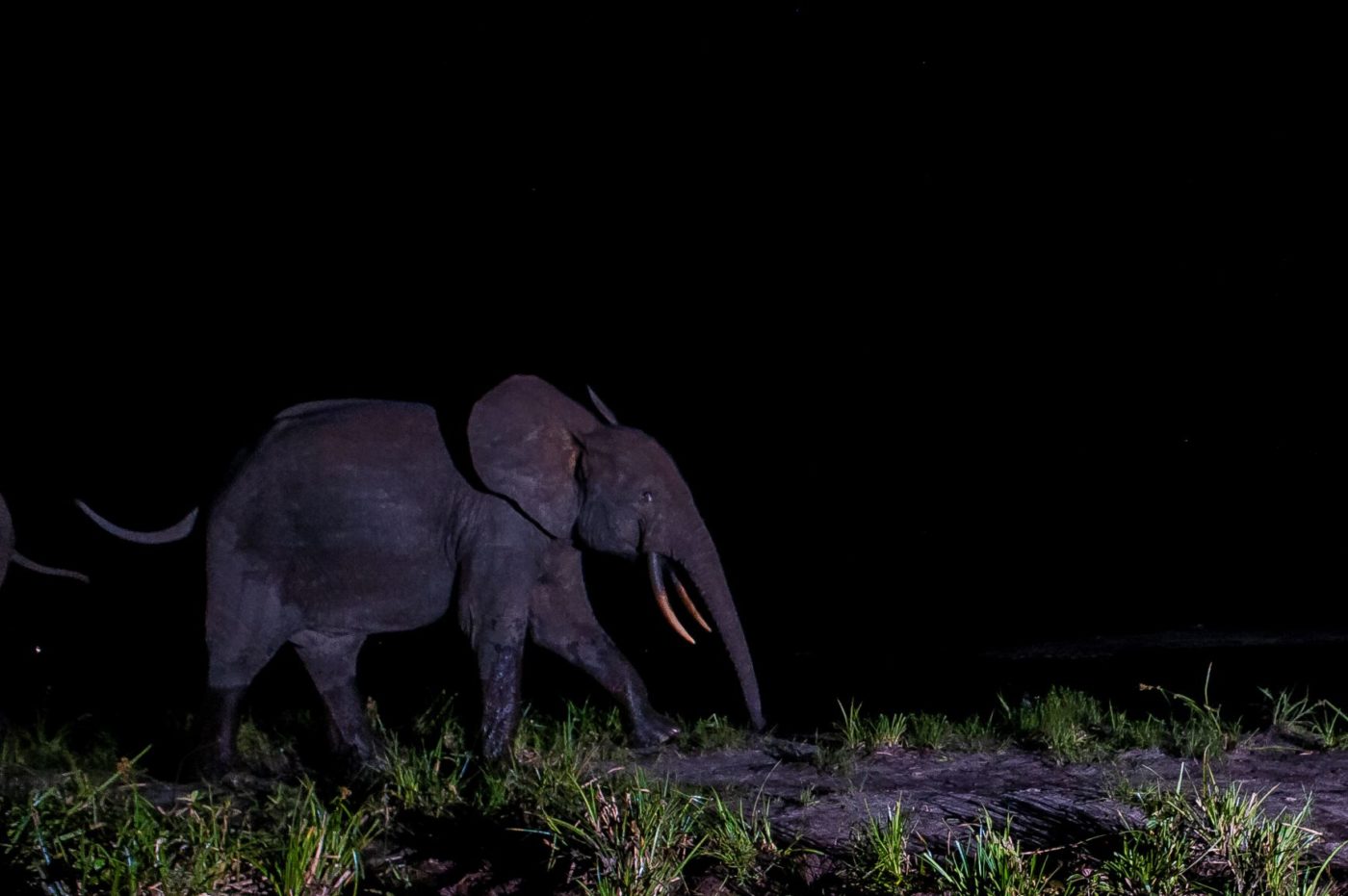
A forest elephant roaming a clearing at night.
Of challenges and difficulties
Biomonitoring in a park as large as Belgium – how is that accomplished? There are certainly some major challenges?
Salonga National Park is not only huge, but also one of the remotest areas in Central Africa, with very limited infrastructures at the time of the inventory. Essentially, these are limited to footpaths and rivers. It takes a lot of creativity to organize the logistic and the movements around the park. And even more important, it takes dedicated, motivated and physically outstanding people. We were fortunate enough to have plenty of such people involved in the inventory.
How long did it take in total until all spots were equipped with camera traps?
Salonga Nationa park is so big that we could not survey it all with camera traps at once. We had to cover one bit after the other until it was done. All in all, it took 18 months, including breaks between phases and missions.
This is certainly a very high logistical effort. How do you organize that?
We took two different approaches. In the first phase, we used the river Luilaka, which borders Salonga’s southern block to the east, as a highway to access the park. We started from the north, in the area around Monkoto, and moved south with dugout canoes surveying the forest up to the south-eastern limit of the block: the village of Nkomba Dumbe.
In the second phase we could not do the same (no suitable river) and we organized two main logistical bases, in Anga (to the south) and Mundja (to the west). From there, provisions and equipment were carried by the porters into the deep of the block, along the Iyaelima path, where the teams would collect them to continue the work. The Iyaelima path leads to their villages, which are located within the park’s boundaries.
»It takes a lot of creativity to organize the logistic and the movements around the park. And even more important, it takes dedicated, motivated and physically outstanding people. We were fortunate enough to have plenty of such people involved in the inventory«
The video shows multiple species that inhabit Salonga National Park.
With such a big project – what thoughts were going through your mind when the project started?
It was a challenge, for sure. In the first months I was sometimes feeling overwhelmed by the scale of this project, the logistical difficulties and the need of finding the most efficient survey strategy. Then things set, and it all became less stressful. Although never simple.
Have you decided to concentrate on certain species, or is it more like this: Whatever is caught in the camera trap will be evaluated?
There was no focus on particular species although we were obviously hoping to capture species of conservation interest such as the giant pangolins, African golden cat, Congo peafowl, bonobo and forest elephant. I would say you pretty much summed up the spirit!
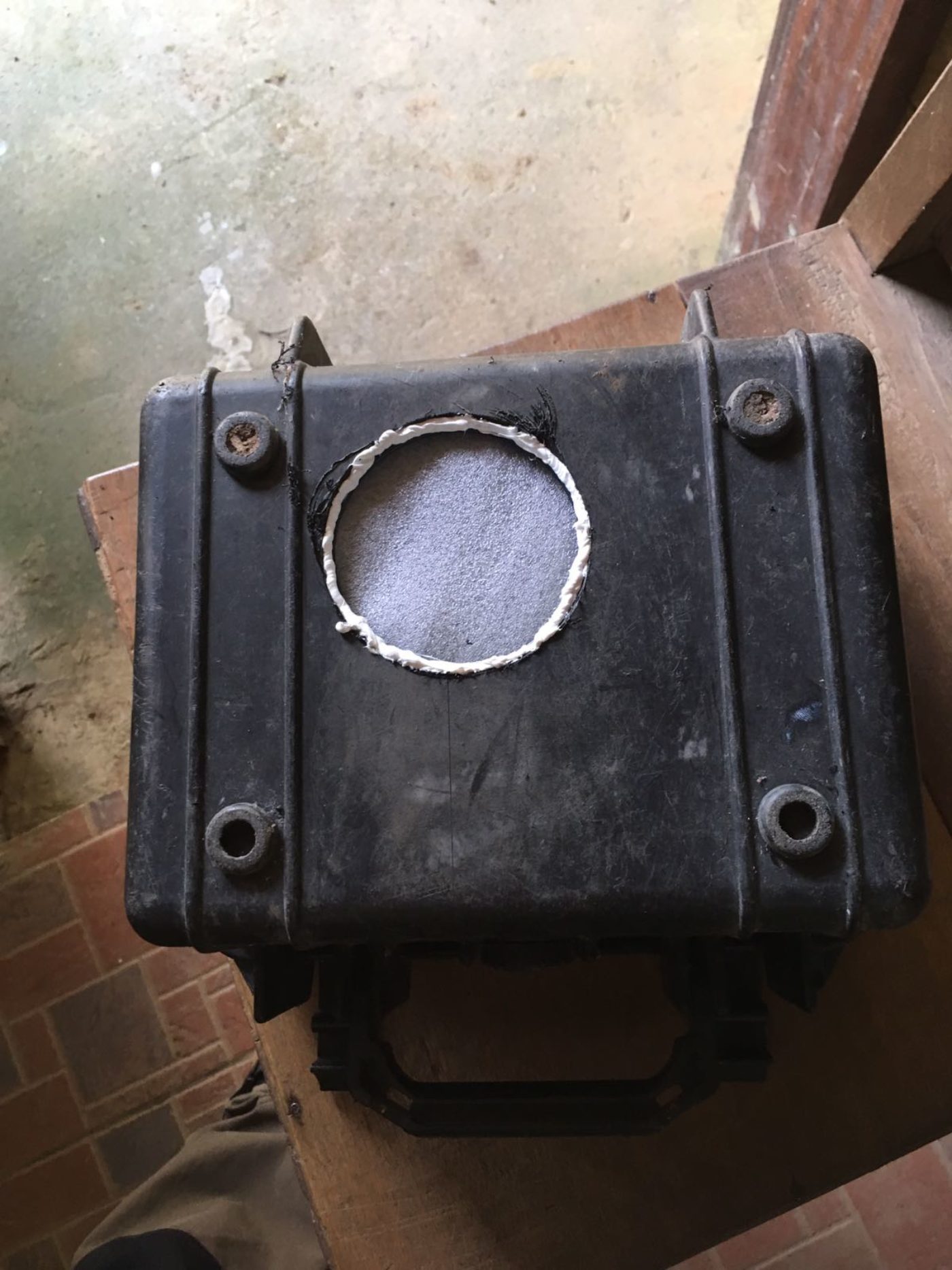
A protective cover of a camera trap.
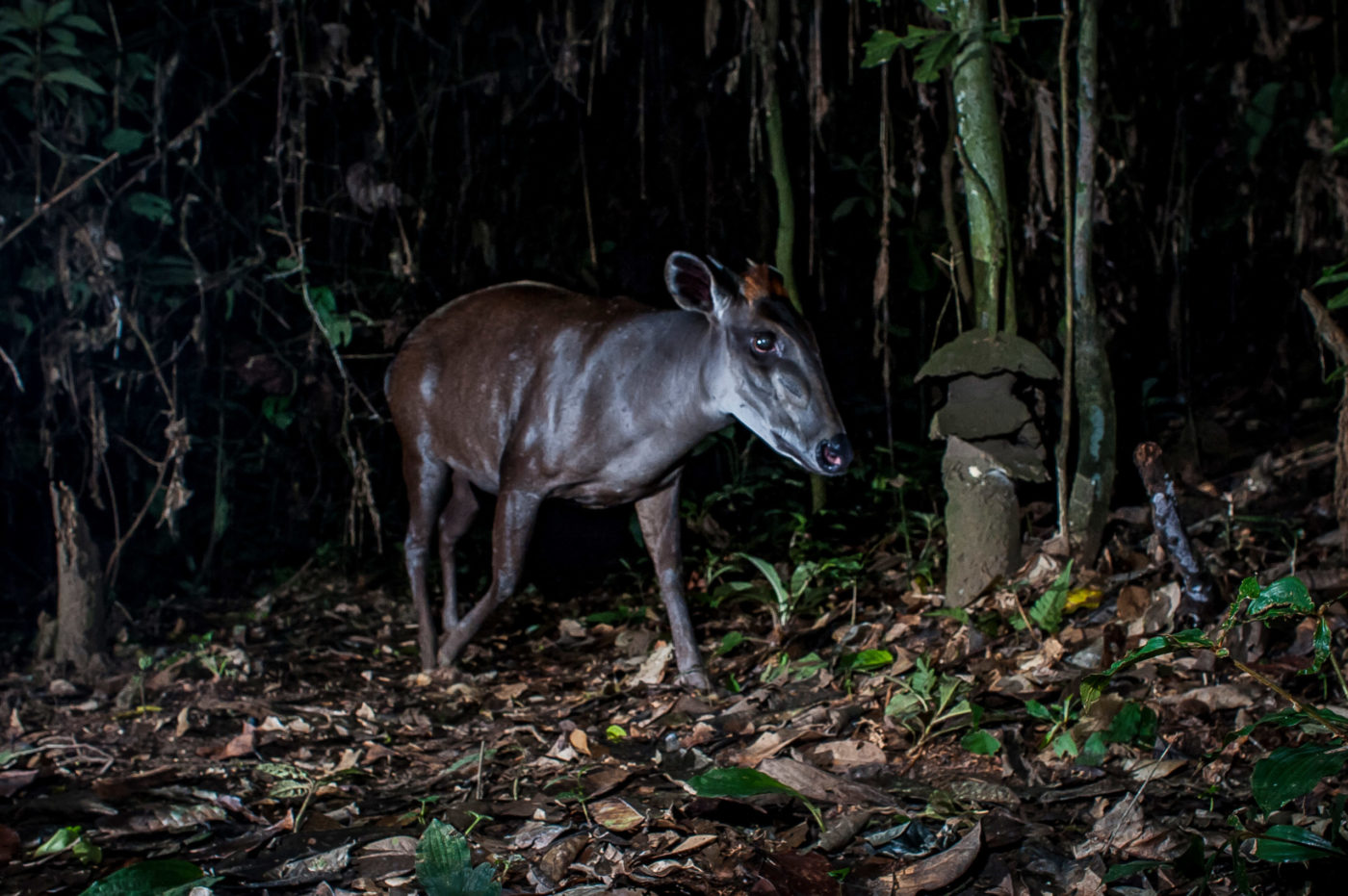
Camera trap footage of a night-active duiker.
Monitoring with camera traps
You set up a total of 160 camera traps in 743 locations. Over what period of time did this take place and how long were the cameras in the same place?
The inventory lasted 18 months, breaks included. Cameras were left on the same spot for a minimum of two weeks, one month in average. We had a limited number of cameras, therefore the most difficult part, logistically, was retrieving and returning them to the monitoring teams in time for the next mission. In this regard, Salonga’s rangers were of huge help.
Did the cameras provide photos or videos – or both?
Our cameras were set to record videos only.
How often were images downloaded? And are the cameras staying on the site?
The images were downloaded anytime that cameras had to be moved to another location. Normally, once per month. After the inventory, all working cameras have been returned to the Park management.
With the monitoring a total area of 17,127 km2 is covered. That is an area larger than Northern Ireland. Is this area representative for the whole park (in the sense that e.g. all essential habitats are covered)?
Yes, the cameras were placed systematically on predefined locations, 6km apart from each other. The locations were generated from a random origin. This approach allowed covering all habitats represented in the Park, proportionally to their occurrence. However, we focused only on the southern block, whereas the northern block and the Park’s corridor were surveyed by teams deployed by the Wildlife Conservation Society and the Zoological Society of Milwaukee, using a similar design.
Together, we managed to survey 45,000km2, one of largest and most detailed survey ever accomplished on such a large area.
It was probably difficult to get to the places where the camera trap were to be installed. Can you describe that for us? How many people were involved? How many days were spent on the ground?
In the first phase, we used dugout canoes to move our 5 teams to entry points along the river Luilaka. From there, they would move into the forest to reach the camera locations. In the second phase, teams used villages along the Iyaelima path as temporary base, whilst food and equipment were delivered to them by porters from Anga and Mundja. Each team was composed by 6 members, a cook and a dozen porters carrying food. They would spend three weeks in the forest to survey 7-8 locations on average, walking their way through almost 80km of forest and swamps each month. They found their way using compass and GPS. The path often had to be opened with machetes to pass through liana entanglements and marantacea thickets.
Each month roughly 100 people entered the forest for the inventory. A massive effort.
»We managed to survey 45,000km², one of largest and most detailed survey ever accomplished on such a large area.«
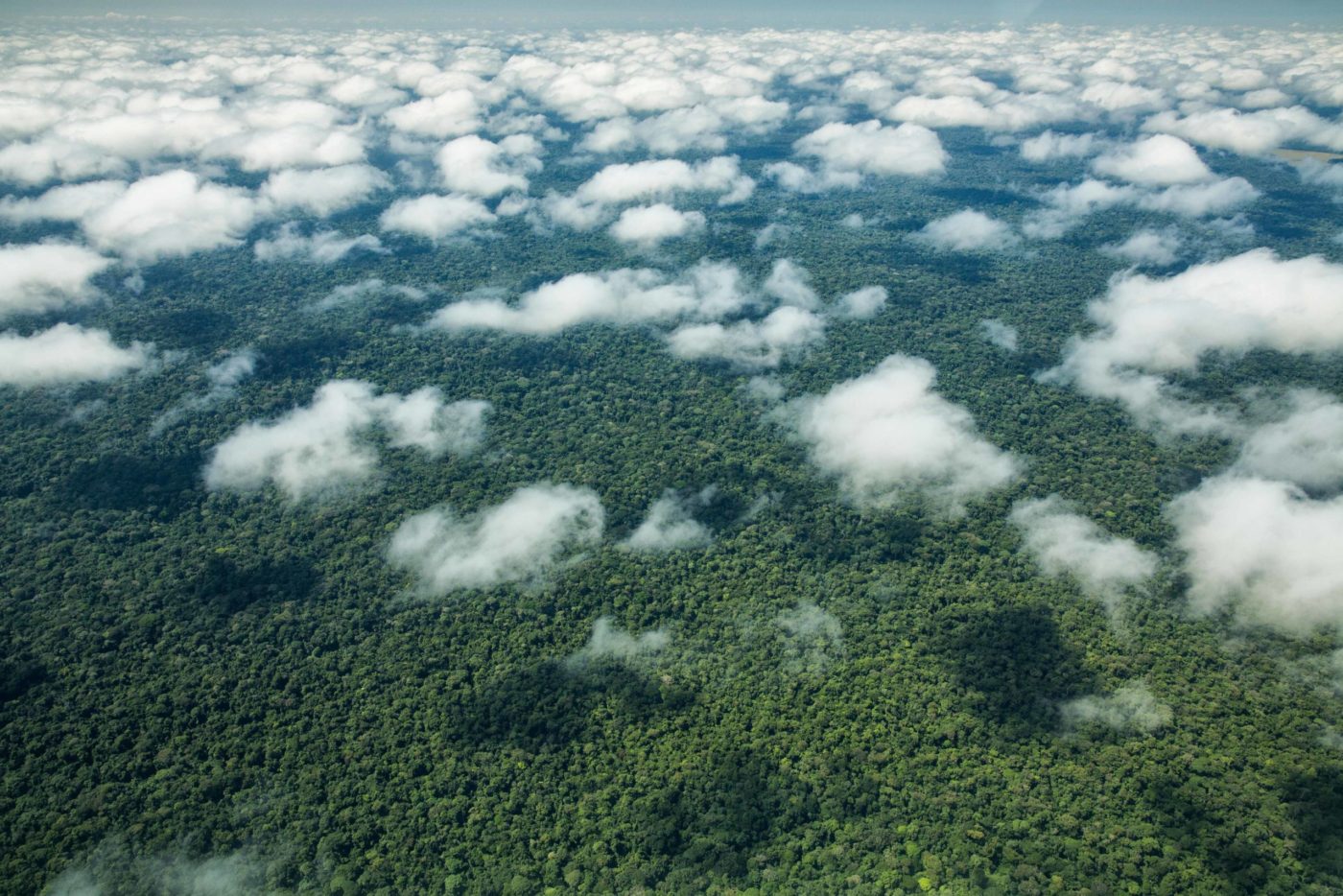
Aerial view of the vast and dense forests of Salonga.
Memorable moments
You probably have to be a very patient person to be involved in such a project … When did you first see pictures and what was it like?
Actually, it didn’t take too long before the first images came out: about two months. I remember the potential of camera-traps was immediately clear and we were all very excited. Only 25 survey locations provided videos of 24 different species, including bonobos, Congo peafowls and a giant pangolin. Many others were to come!
What was the biggest surprise for you? Is there a personal highlight for you?
I can’t say there was a real surprise, but I remember elephant videos were always a source of great satisfaction and relief. They are so rare and have been poached so heavily that seeing them around gave us the strength to keep going. They made us remember the importance of this inventory.
Is there a particularly nice photo or video that is stuck in your mind?
Perhaps, one of the very few leopard videos. We once had the chance of having a big leopard resting for a few minutes in front of one camera. It stretches and rolls like a cat before moving on, probably looking for a meal. Amazing video (ed. see video link below).
Have all data been evaluated in the meantime?
No, the database we put together is very big (16,000 videos with animals) and processing the videos is very time consuming. In this first research we focused on 14 species, of some conservation interest and different enough from each other in order to test the applicability of a relatively new method for estimating animal numbers (abundance) from camera traps. There are at least another 30 species could be studied and evaluated. More importantly, there is so much more than abundance estimates that could be investigated thanks to these videos. Personally, I am currently focusing on bonobos, investigating ecological and conservation aspects specific to this endemic ape. But there is so much still to be done!
What are the next steps: Should the monitoring be repeated at certain intervals?
Yes, repeating the monitoring at regular intervals would be essential. This would allow detecting changes in population size and understanding population trends: which is whether animal populations are increasing or decreasing. This information is crucial because we and the Park would then know where conservation measures are working and where they are not and act accordingly.
Mattia, thank you very much for this interview. We wish you all the best for this outstanding work.
»I remember elephant videos were always a source of great satisfaction and relief. They are so rare and have been poached so heavily that seeing them around gave us the strength to keep going. They made us remember the importance of this inventory.«
